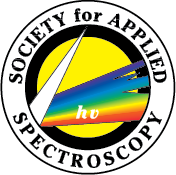AIMS AND SCOPE: Reporting High-Quality Research in Spectroscopy
Applied Spectroscopy is an international journal for the publication of original research and review articles covering all aspects of spectroscopy. The journal seeks to be comprehensive in scope, with its primary aim the publication of papers on both the fundamentals and applications of photon-based spectroscopy. These include, but are not limited to, ultraviolet-visible absorption, fluorescence and phosphorescence, mid-infrared, Raman, near-infrared, terahertz, and microwave, and atomic absorption, emission, laser-induced breakdown spectroscopies (and ICP-MS), as well as cutting-edge hyphenated and interdisciplinary techniques.
Fundamental topics include, but are not restricted to, the theory of optical spectra and their interpretation, instrumentation design, and operational principles. Reports of spectral processing methodologies such as 2D correlation spectroscopy (2D-COS), baseline correction, and chemometric methods applied to spectra are also strongly encouraged. Application papers are intended to feature novel, innovative applications of spectroscopic methods and techniques. Papers from all fields of scientific endeavor in which applied spectroscopy can be utilized will be considered for publication. Representative fields include chemistry, physics, biological and health sciences, environmental science, materials science, archeology and art conservation, and forensic science.
In addition to full papers, the journal publishes Rapid Communications, Spectroscopic Techniques, Notes, and Correspondence related to previously published papers. A regular feature of the journal, Focal Point Reviews, provides definitive, comprehensive free-to-view reviews of spectroscopic techniques and applications. The journal encourages the submission of proposals for consideration for Focal Point articles.
Interested in showcasing your work? Find instructions for authors here!
Applied Spectroscopy - Practica
AIMS AND SCOPE: Reporting High-Quality Applied Work in Spectroscopy
Applied Spectroscopy - Practica is an international journal for the publication of original applied work covering all aspects of spectroscopy. The journal seeks to be comprehensive in scope, with its primary aim the publication of papers on applications of photon-based spectroscopy. These include, but are not limited to: extending existing techniques ot new systems, including process application; data processing and method workups; spectroscopic applications outside of the traditional analytical chemistry fields such as industrial spectroscopists; and work related to developing instruments and applications for 'routine' use by non-specialists.
In addition to full papers, the journal will have a section on hints and tips for using spectrometers and accessories, and a tutorial on a mature technique.
Editor/Editor-in-Chief Applied Spectroscopy Practica
Applied Spectroscopy Practica is the Society’s new open-access, peer-reviewed journal. It has the same editorial and reviewing standards as the Society’s long-standing Journal, Applied Spectroscopy.
Richard Crocombe will be stepping down as the Editor-in-Chief (EiC) of Applied Spectroscopy Practica at the end of 2024. The Society for Applied Spectroscopy (SAS) intends to appoint an Editor for this Journal for January 2024, with the anticipation that the Editor would succeed to the position of Editor-in-Chief at the start of 2025. (At that point, Richard Crocombe would become an Editor). Appointment to the position of Editor-in-Chief is on the recommendation of SAS’s Publications Committee and the approval of SAS’s Executive Committee. The EiC usually has a three-year term, and runs the Journal editorially independent from the Society.
The Editor supports the Editor-in-Chief in several ways: providing day-to-day cover when the EiC is unavailable; consulting on any ‘problematic’ manuscripts; suggesting reviewers, additional Associate Editors and Editorial Advisory Board members, soliciting manuscripts, discussing initiatives for Journal topics, etc. There are also regular short video calls with the Journal’s Managing Editor (Kristin MacDonald) and with SAGE. For 2024, the likely effort is no more than five hours a week.
The Editor-in-Chief is responsible for the Editorial policy and functioning of the Journal. Day-to-day tasks include evaluating manuscripts as they are received. A proportion may be ‘declined’ immediately based on being out-of-scope, poor quality, duplication of existing published work, or plagiarism. The Managing Editor triages manuscripts for duplication and plagiarism using the IThenticate tool. Manuscripts are then assigned to an Associate Editor, who is responsible for assigning reviewers and making a recommendation (e.g., minor revision, major revision) to the EiC based on those reviews. Once accepted, manuscripts are processed by the Managing Editor and Sage. The whole process is run via Sage’s version of ScholarOne. At present, the plan is to have four issues of Practica per year. Once Practica reaches a steady state, this probably entails receipt of about 10-16 manuscripts per month. If that number increases significantly, then SAS will discuss with Sage the possibility of increasing the issue frequency. In the future, the Journal might also have either special issues, sections, or collections on specific topics of interest.
Other EiC tasks include selecting additional Associate Editors and Editorial Advisory Board members, soliciting manuscripts (especially at scientific conferences), preparing and presenting reports on the Journal to SAS (Publications Committee, Executive Committee, and Governing Board), and working on a regular basis with the Managing Editor and Sage. There are occasional conversations with the EiC and Editor of Applied Spectroscopy, and that Journal can pass manuscripts (which are regarded as good science but out-of-their-scope) onto Practica.
At present, the effort for the EiC is about ten hours per week. This may reduce as the Journal moves through its ‘teething’ phase, but could remain at that level if the number of submissions increases significantly. SAS provides modest stipends for the Editor and EiC.
SAS is soliciting applications for the position of Editor, to start in January 2024. Applicants should submit a statement of interest, a resume and details of editorial and publications experience to SAS’s Executive Secretary at: exdir@s-a-s.org
